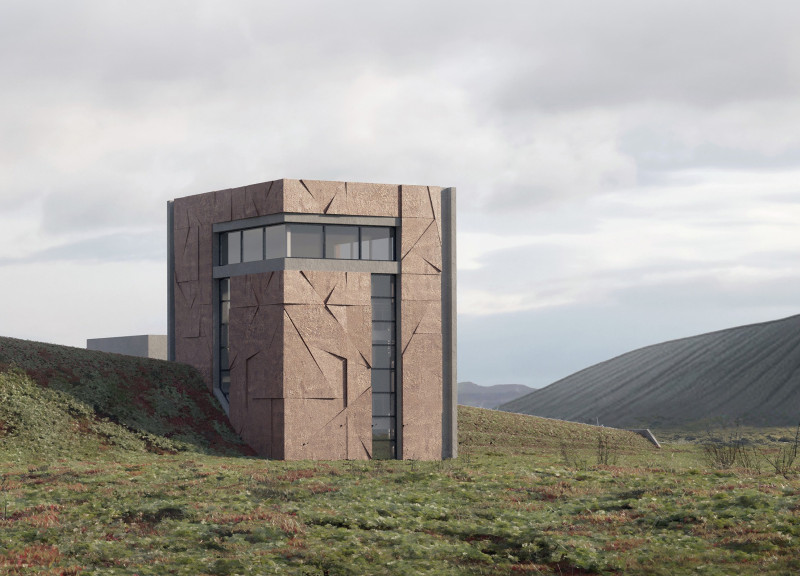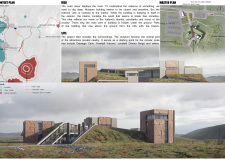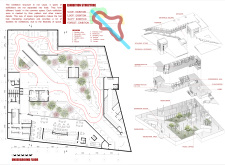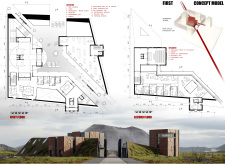5 key facts about this project
The project emphasizes a connection between architecture and geology, with a largely subterranean structure that reflects the hidden depths of the earth. By partly embedding the museum within the landscape, the design minimizes visual impact and takes advantage of natural insulation, thereby enhancing energy efficiency. The concept of exploring geological layers is mirrored in the spatial organization, allowing visitors to engage with the exhibitions in a manner that reflects the earth’s formation processes.
Innovative Spatial Organization
The layout of the Volcano Museum features a series of interconnected exhibition corridors, categorized as “Cave,” “Loop,” “Alley,” and “Forest” exhibitions. This thematic zoning facilitates a dynamic visitor experience, allowing for fluid movement through various geological narratives. The underground exhibition space serves as the centerpiece, reinforcing the concept of exploration through geological layers. Additionally, the design prioritizes visual connections to the surrounding volcanic landscape, establishing a dialogue between the interior space and the exterior environment.
Unique Architectural Approaches
The architectural approach of the Volcano Museum is characterized by its material choices and structural configuration. The use of concrete, reinforced concrete, stone cladding, and glass is deliberate, aimed at reflecting the rugged nature of Icelandic geology. These materials not only provide structural integrity but also foster a tactile connection to the landscape. Key architectural features include angular and fluid geometries that resonate with the natural topography, helping to integrate the building as a continuation of the earth's formations.
The transparency created by strategic glass placement allows natural light to filter into the space, further enhancing the visitor experience while providing panoramic views of the volcanic terrain. The combination of these design elements facilitates a nuanced interpretation of the natural context, encouraging visitors to appreciate both the architectural and geological aspects of the site.
For more detailed insights into the architectural plans, sections, and overall design of the Volcano Museum, readers are encouraged to explore the project's presentation. Engaging with the comprehensive architectural ideas underlying this design will provide a deeper understanding of its unique contributions to the field of architecture and its role in elucidating Iceland’s geological heritage.


























